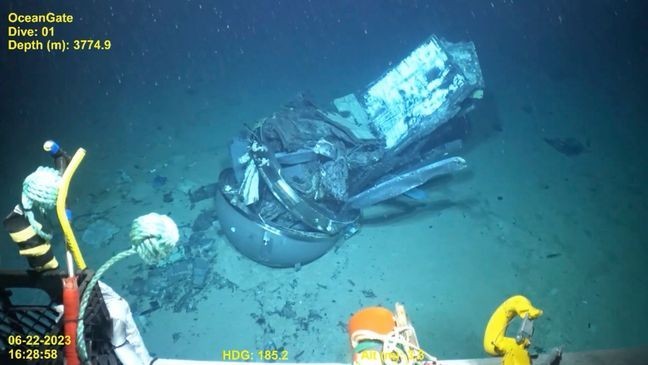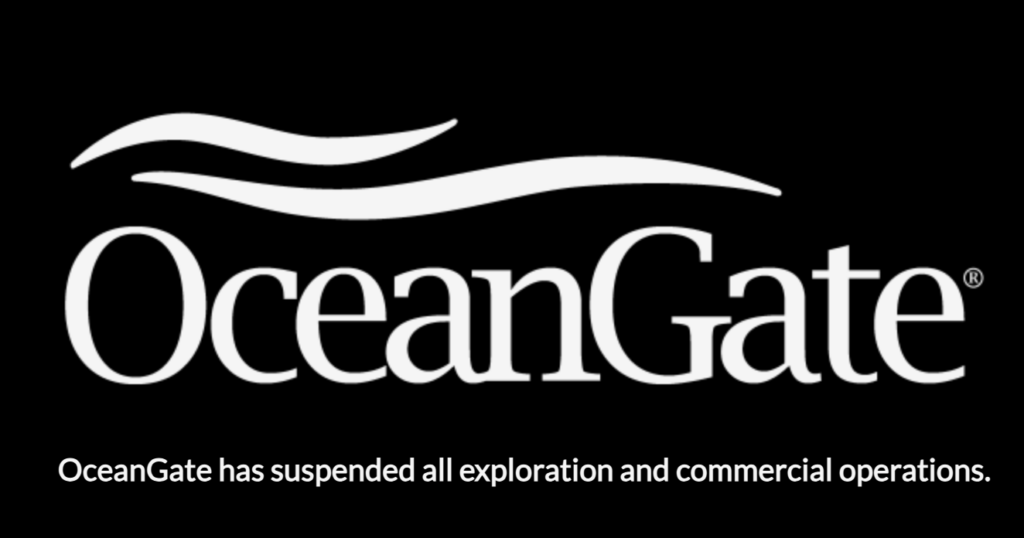
- 1. Early Life and Influential Roots
- 2. A Stellar Academic and Professional Foundation
- 3. Founding OceanGate: A Vision for the Deep
- 4. Building a Fortune on Bold Ventures
- 5. Controversies and the Cost of Innovation
- 6. The Human Cost of Bold Ambitions
- 7. Legacy Beyond the Balance Sheet
- 8. Reflecting on a Life of Risk and Reward
Stockton Rush’s name is inextricably linked with the daring realm of deep-sea exploration. As the co-founder and CEO of OceanGate Expeditions, his innovative approach to unlocking the mysteries of the ocean helped redefine underwater tourism and research. Despite the high-octane, larger-than-life image of extreme expeditions, the financial portrait of Stockton Rush paints a more measured picture. With an estimated net worth of around $12 million, Rush’s fortune—while significant—is modest when compared to the billionaires often featured in headlines. This article explores his life, career, and the unique factors that contributed to his financial legacy and the vast Stockton Rush net worth.
Early Life and Influential Roots
Born on March 31, 1962, in San Francisco, California, Stockton Rush was destined for a life of ambition and exploration. Raised in a family with deep historical and financial roots, he was a descendant of influential figures such as Benjamin Rush and Richard Stockton, both signers of the Declaration of Independence. His lineage also included other notable personalities, providing him not only with a sense of legacy but also a financial cushion that allowed him to pursue his unconventional dreams without the immediate pressure of financial survival.

From a young age, Rush displayed an insatiable curiosity about the world. His early fascination with aviation led him to become the world’s youngest jet transport-rated pilot at just 19 years old. This achievement was a harbinger of his later pursuits—where he would combine technical skill with an adventurous spirit. His privileged upbringing and the support of his family afforded him opportunities that many could only dream of, setting the stage for his future ventures in both the aerospace and marine industries.
A Stellar Academic and Professional Foundation
Rush’s academic credentials are impressive. He attended the prestigious Princeton University, where he earned a Bachelor of Science in Aerospace Engineering. His time at Princeton was not just marked by academic achievement but also by the development of a mindset geared toward innovation and risk-taking. Later, he further honed his business acumen by obtaining an MBA from the University of California, Berkeley. This blend of technical prowess and business savvy provided him with the necessary tools to navigate the complex worlds of engineering and entrepreneurship.
After college, Rush embarked on a career in aerospace, working for renowned companies like McDonnell Douglas. His work as a flight test engineer on projects such as the F-15 fighter jet program provided him with firsthand experience in high-stakes engineering—a background that would later prove invaluable in his deep-sea ventures.
Founding OceanGate: A Vision for the Deep
In 2009, driven by his lifelong passion for exploration, Stockton Rush co-founded OceanGate Expeditions with business partner Guillermo Söhnlein. The company was born out of a realization that the ocean’s depths remained one of the few frontiers largely untouched by commercial tourism. With an innovative idea to bring paying passengers on expeditions to view historic underwater sites like the Titanic wreck, Rush envisioned a new era of ocean exploration.

Under his leadership, OceanGate developed a series of submersibles—including the Cyclops series and the ambitious Titan submersible—designed to reach depths previously thought unreachable for private enterprises. The Titan, in particular, was touted as a technological marvel, capable of descending more than 13,000 feet to explore the sunken remains of the Titanic. Tickets for such deep-sea expeditions were priced at an eye-popping $250,000 per person, highlighting both the exclusivity and the financial stakes of such ventures.
Building a Fortune on Bold Ventures
While the idea of venturing to the ocean floor captured the public’s imagination, the financial underpinnings of Rush’s career reveal a different narrative. The Stockton Rush net worth—estimated at around $12 million—was built through a combination of his salary as OceanGate’s CEO, his previous roles in aerospace engineering, and a measure of inherited family wealth. Unlike tech moguls whose fortunes run into the billions, Rush’s wealth was more modest, reflective of the niche industry in which he operated.
OceanGate itself was valued at approximately $66 million at its peak, but much of the financial risk in such a pioneering venture lies not in generating massive profits but in the continuous innovation required to push technological boundaries. In many ways, Rush’s approach was driven more by passion and vision than by the pursuit of astronomical wealth.
His focus was on breaking new ground in deep-sea exploration, even if that meant operating on a lean budget compared to other industries. This drive often led to cost-cutting measures that sparked debates about safety and engineering standards—a controversial aspect that, in hindsight, has become part of his complex legacy.
Controversies and the Cost of Innovation
No discussion of Stockton Rush’s career would be complete without addressing the controversies that accompanied his unorthodox business decisions. Critics argued that Rush’s emphasis on rapid innovation sometimes came at the expense of established safety protocols. Debates raged online and among industry experts about whether his financial constraints—or perhaps his desire to challenge the status quo—led him to cut corners. Some commentators speculated that despite his family background, his personal funds were insufficient to support the high costs of rigorous testing and development, leading him to adopt riskier engineering practices.
This contentious approach became a focal point following the tragic implosion of the Titan submersible in June 2023, which claimed the lives of all aboard, including Rush himself. While many debates have centered on whether he was merely being innovative or recklessly cutting corners, it is clear that the balance between cost, safety, and technological ambition is a fine line—one that Stockton Rush navigated with both brilliance and controversy.
The Human Cost of Bold Ambitions
The tragedy that ended Rush’s life underscored the inherent risks of pushing the boundaries of exploration. In the wake of the Titan disaster, questions about the adequacy of the company’s engineering practices and financial planning resurfaced with renewed intensity. Critics pointed to the relatively modest net worth of $12 million as evidence that Rush might not have had the financial wherewithal to implement the extensive safety measures that could have prevented the catastrophe.

However, supporters of Rush argue that his approach was rooted in a deep-seated belief that true innovation requires taking risks. His famous quip—“if you just want to be safe, don’t get out of bed”—epitomized his philosophy. For Rush, the thrill of exploration and the potential to revolutionize an industry outweighed the conventional wisdom that demanded caution. In his view, the pursuit of knowledge and adventure was an end in itself, even if it meant operating with a financial margin that was less than what would be expected in more traditional industries.
Legacy Beyond the Balance Sheet
Stockton Rush’s financial legacy, measured in millions rather than billions, does not fully capture the impact of his work on the field of ocean exploration. His willingness to venture into uncharted territory has inspired a generation of explorers, engineers, and entrepreneurs. Although the Stockton Rush net worth may seem modest by Wall Street standards, his contributions to deep-sea technology and marine research have left an indelible mark on an industry that continues to evolve.
Beyond the spreadsheets and balance sheets, Rush’s story is one of relentless pursuit—a testament to the idea that the value of innovation cannot always be measured in dollars alone. His life was a blend of audacious dreams, groundbreaking technological advancements, and, ultimately, a sobering reminder of the risks inherent in challenging nature’s limits.
Reflecting on a Life of Risk and Reward
As we look back on Stockton Rush’s career, it is clear that his financial journey was as unconventional as the expeditions he led. His estimated net worth of $12 million is a symbol not of modesty but of a deliberate choice to invest in bold ideas over guaranteed returns. In an era dominated by massive fortunes built on digital innovation, Rush’s legacy stands apart—rooted in the tangible, yet treacherous, realm of the deep sea.

The story of Stockton Rush is a complex tapestry of ambition, innovation, controversy, and tragedy. His financial resources, while not vast by some standards, were channeled into an enterprise that sought to make the impossible possible. His life reminds us that true pioneers are often driven more by a desire to challenge the status quo than by the promise of wealth.
Frequently Asked Questions
Who was Stockton Rush?
Stockton Rush was an American entrepreneur, deep-sea explorer, and the co-founder and CEO of OceanGate Expeditions. He was known for pioneering deep-sea tourism and leading expeditions to historic underwater sites like the Titanic wreck.
What was Stockton Rush’s estimated net worth?
At the time of his passing, Stockton Rush’s net worth was estimated to be around $12 million. This included earnings from his aerospace engineering career, his role as CEO of OceanGate, and inherited wealth from his historically influential family.
How did Stockton Rush earn his money?
He earned income through his early aerospace career, business ventures like OceanGate, and strategic investments, while also benefiting from a privileged family background.
What happened to the Titan submersible?
In June 2023, the Titan submersible tragically imploded during a descent to the Titanic site, resulting in the deaths of all onboard, including Stockton Rush, sparking global debate on safety in deep-sea tourism.
Was OceanGate a profitable business?
OceanGate was valued at about $66 million at its peak, but it operated in a high-cost, niche industry where financial success was measured more by innovation than consistent profit margins.









